The Skeleton Coast

In the middle of nowhere and loving it – scenery along the Skeleton Coast was desert, desert and more desert
You couldn’t imagine a more apt name for a rugged coastline famous for the ships that wrecked upon it or the bones of whales that washed up on it. The Skeleton Coast. Throw in stark rocky mountains, towering sand dunes, howling wind and almost no drinkable water and you get the coastline running the full length of northern Namibia. The Skeleton Coast. To get there was an adventure and to see it was one of the highlights of our trip.
We started the day in the red rock desert area near Twyfelfontein, home to amazing San rock art up to 6,000 years old, and headed west across the barren dry landscape of what is called Damaraland.
The wide dirt track weaved its way around the rocky mountains and through the flat desert wastelands that marked this area. It was stunning stuff, small scrubby bushes clinging to life amongst the rock and sand, no other life on offer. Namibia is famous for its deserts and today was starting off as a major show-off day.
Eventually we hit the remote gate of the Skeleton Coast National Park, still almost 100 kms from the surf but surrounded by the most inhospitable landscape possible. Such was the nature of this land and the government’s attempt to protect it, there is only one place to overnight in the park and that is a luxury resort. For the rest of us, we needed to apply for a transit permit to pass through this highly protected land and exit through its southern border. We were given only a few hours to follow the track to the coast, turn south and exit the park, we hoped plenty of time to enjoy what we will come across.
Julie and I have learned on this trip that deserts take many forms and we most recently saw that in Botswana’s Kalahari Desert which was mostly covered with thick and impenetrable thorn bushes. Here the desert was more traditional and spectacular – tall rocky barren mountains, vast lifeless plains, a few bushes struggling to survive in the wide dry creek beds. There was a timeless beauty to the place, knowing nothing had changed here for millennia and probably won’t for the same again.
As we approached the coast we entered long sandy stretches with dunes on either side, the winds blowing hard and the temperature dropping to below 20C/70F. And as we turned south to follow the coastline the clouds and fog rolled in, the light dimmed and the long desert featured only our wind blown track across its otherwise featureless landscape. Never has the word moonscape had more meaning.
Ah, but what is that warning buzzer from the dash? A tyre is losing its air pressure, the same one we got patched in Rundu in northern Namibia only a few days before. OMG, this is not a good place to have a problem, especially when you could count the number of cars we had seen for the entire day on one hand.
Because we had a spare tyre that we did not entirely trust due to its damaged history we chose to stop instead and refill the slow leak tyre. And sure enough, we could travel about 20 kilometres before having to stop to refill it again. It was an anxious time, surrounded by imposing windswept nothingness, a time limit on our stay in this park, trying to limp our way across the line.
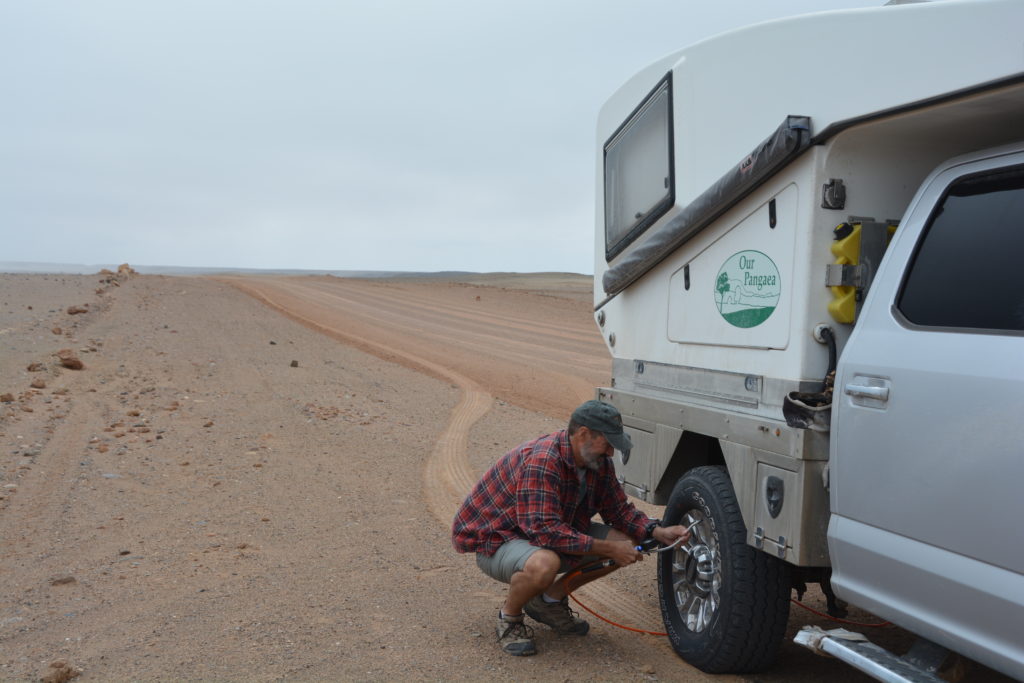
Not a good look…the slow leak on this troublesome tyre meant we had to stop and refill it every 20 kilometres
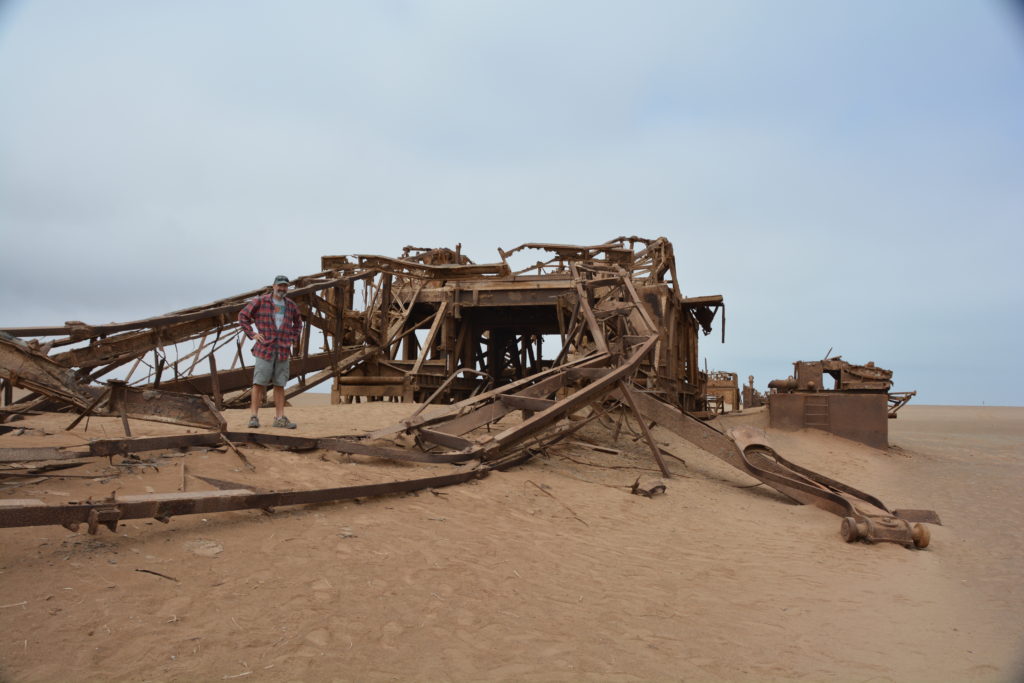
In the middle of nowhere we came across this old abandoned mining site, now being consumed by the desert sand
And so we did, passing from Skeleton Coast National Park to Dorob National Park, slightly better roads, still refilling Tramp’s right rear paw every 20 kms or so. Eventually we made our way to Cape Cross Lodge where we camped in their grounds with all the South African fishermen and changed the tire. This is a remote forsaken spot but at least the fishing is good, or so they say. That night we dined like kings in their swish restaurant and tried to stay out of the howling wind that swept off the ocean and blew away everything that was not anchored down.
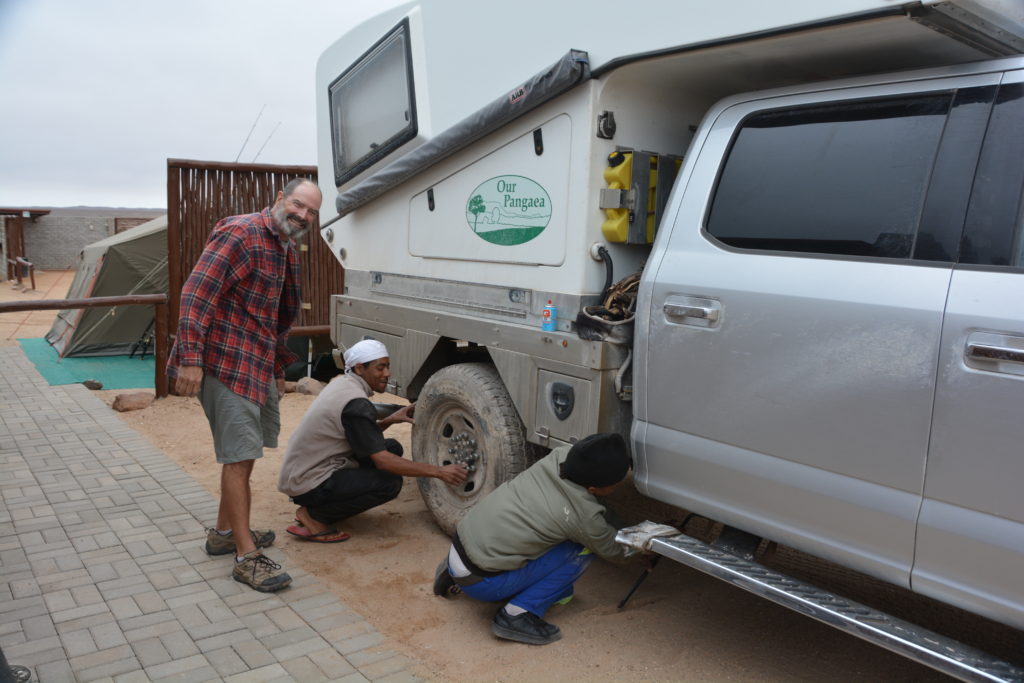
This is how you change a tyre Namibia-style – you pay a couple of keen young local lads to do it for you!
Cape Cross has a rich history in Portuguese explorers, whalers from many nations, wrecked ships and fur seals. Cape fur seals, to be exact. And out on the point is the largest of their permanent colonies so we drove out to have a look.
What we found made us shake our head in wonder, smile at this photogenic scene and wince at the knee-buckling smell. Spread out across the rocky shore and swimming nearby in the rough surf was about 100,000 fur seals. No kidding, that’s the official count. But they extended up and around the cross originally left by Portuguese explorers, across the car park where we were supposed to be and completely overwhelmed the small shelter built for people to enjoy the seals.

A replica of the original 15th century Portuguese explorer’s cross now looks over this huge colony of seals
So many wonderful scenes amongst the thousands and thousands of seals, four month old pups nursing off their mums, territorial squawking between mums, the surf boiling with seals riding the waves, creches of pups huddling together while their mums are in the ocean feeding, even the jackals who were riding the perimeter looking for weak or separated pups. All wonderful cheering scenes but the overwhelming sensory input we had was the smell, foul beyond words, an animal urine/poop smell like no other. Time to move on.

When the mums go out to sea for food the pups tend to congregate together like a children’s creche for protection
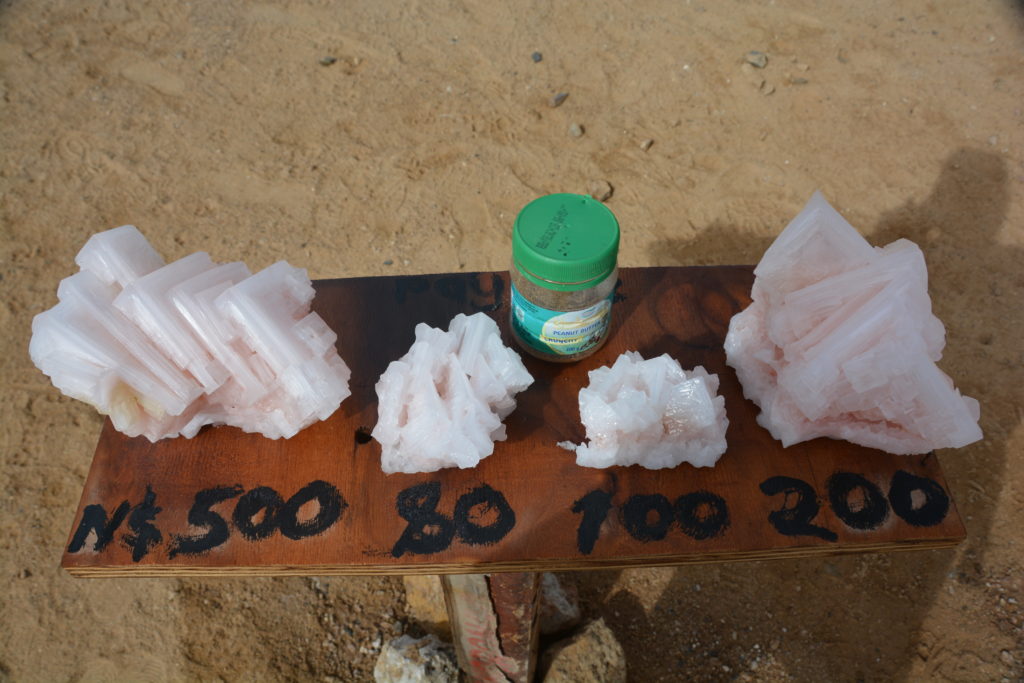
As we drove south we came across these unattended tables on the side of the road selling salt crystals with their price written under each one and an honesty jar for your payment
And so we did, driving south to Swakopmund without a working spare, having prearranged for a tyre repair shop to open up on Sunday morning to help us out. And without a smile or literally a single word, despite the huge call-out fee, they fixed our tyre and sent us on our way. And so goes another example of Bill’s Travel Rule Number 1 – any problem can be solved if you throw enough money at it.
We enjoyed walking out on the jetty of Swakopmund, originally a German port and administration centre when they ruled this corner of Africa, now a touristy town between the ocean and the vast sandy desert. The town had a nice feel to it based on our glancing blow but we moved south again, leaving the town’s last building and immediately entering into a range of huge sand dunes that stretched down to the raging surf.
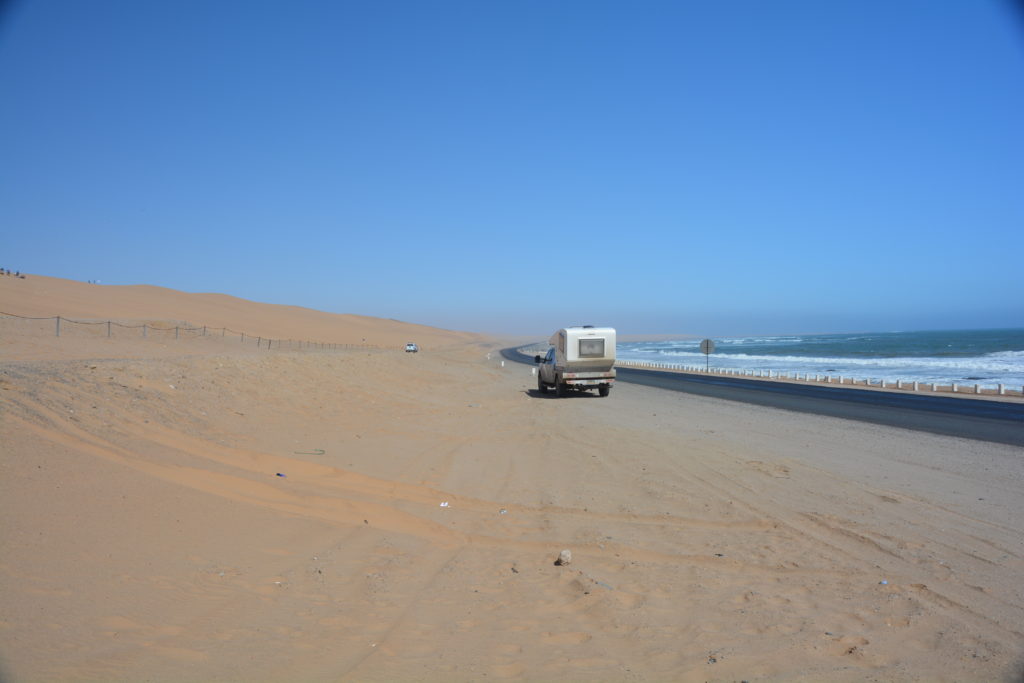
Between Swakopmund and Walvis Bay huge sand dunes came right down to the surf – quite an unusual and spectacular site
As we drove south towards Walvis Bay the wind picked up, blowing sand across the roads and making the scene eerily apocalyptic. We had considered staying in Walvis Bay but the sand storm made the thought of camping very unattractive so we left the Skeleton Coast and headed inland across the horizonless Namib Desert. We stopped at a huge imposing sand dune called Dune 7 where on a good day the locals take their card board boxes and slide down the steep slopes but on a miserable windy day nobody was there and we had this massive dune to ourselves.
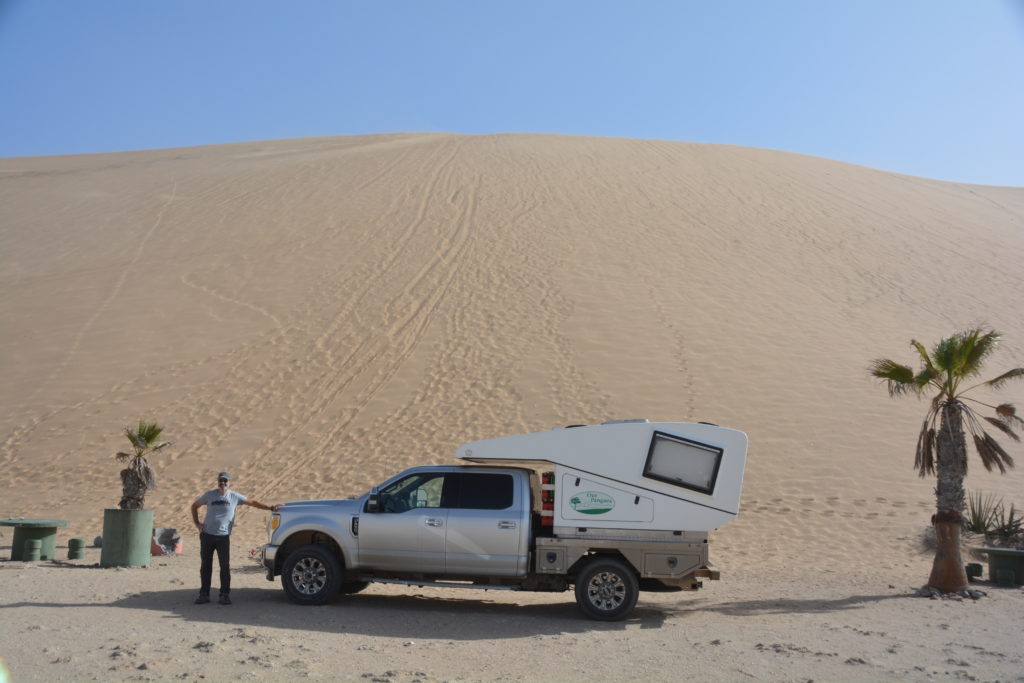
Usually a Sunday afternoon would see Dune 7 covered in people sliding down its steep slopes but in this howling wind everyone had wisely stayed indoors
We left the paved roads again and headed east across the desert, flat, lifeless, sand blowing across the roads, headlights trying to cut through the storm, no traffic in either direction.
We found a large sandstone rock protruding from the desert, call it Namibia’s version of mini Uluru in central Australia, and parked behind its massive sloping walls for a stunningly beautiful and partially wind-protected night. The Southern Cross was ablaze in the sky, the three-quarter moon lit up the huge rock, we were probably the only humans within 30 or even 50 kms and we were in total bliss. A perfect 10.
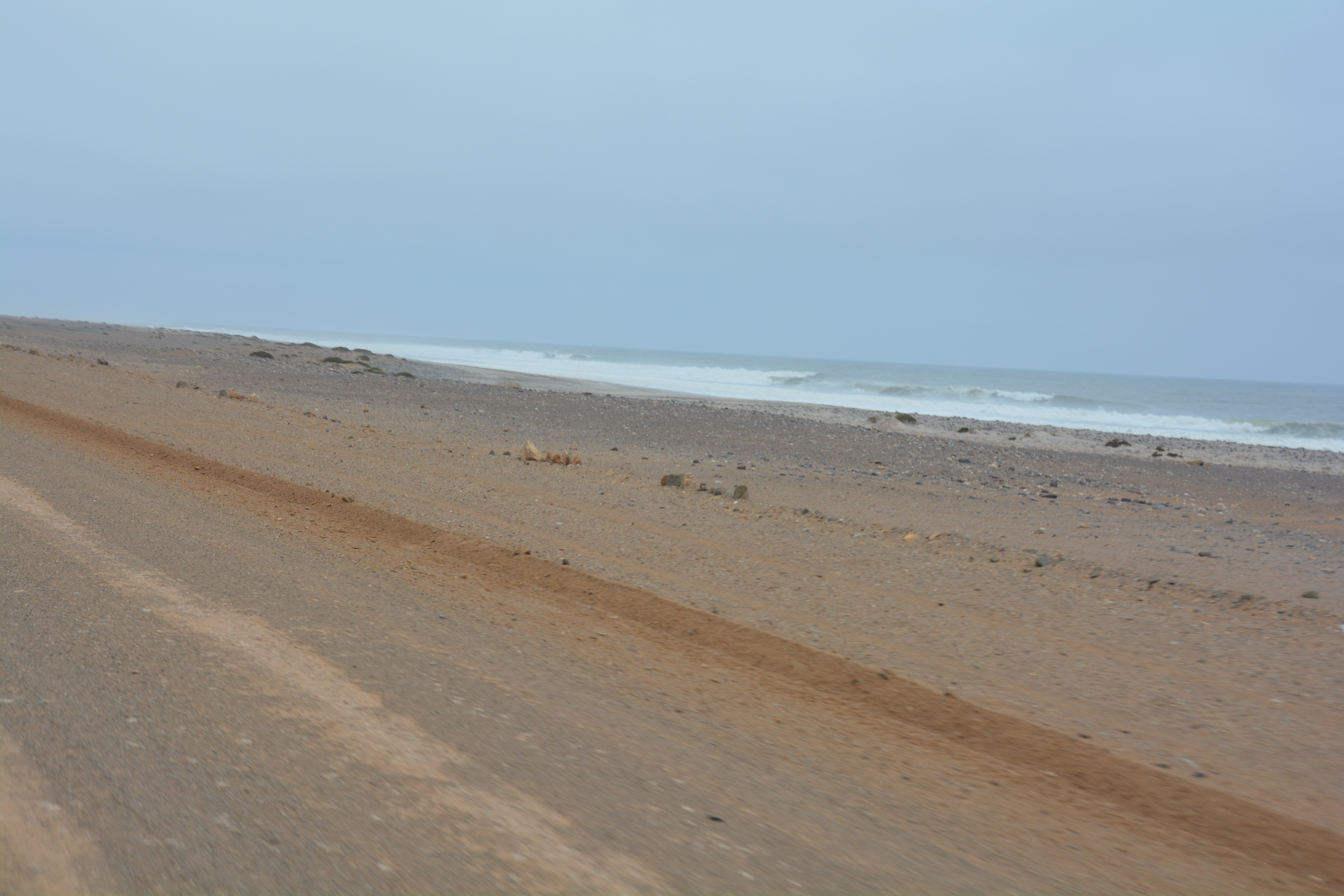















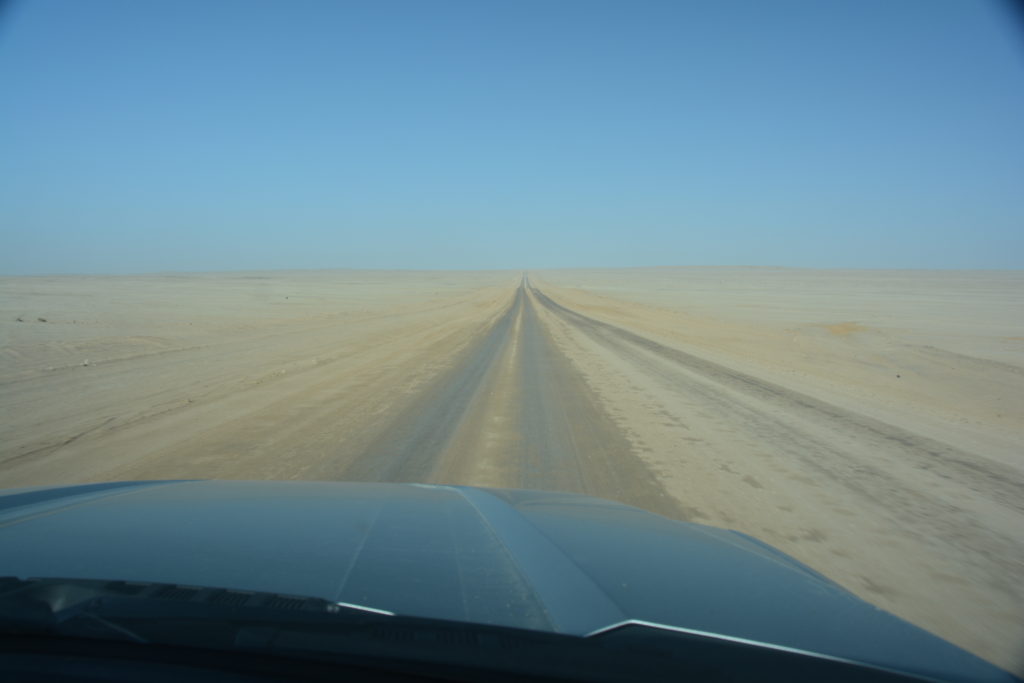

Comments
The Skeleton Coast — No Comments
HTML tags allowed in your comment: <a href="" title=""> <abbr title=""> <acronym title=""> <b> <blockquote cite=""> <cite> <code> <del datetime=""> <em> <i> <q cite=""> <s> <strike> <strong>